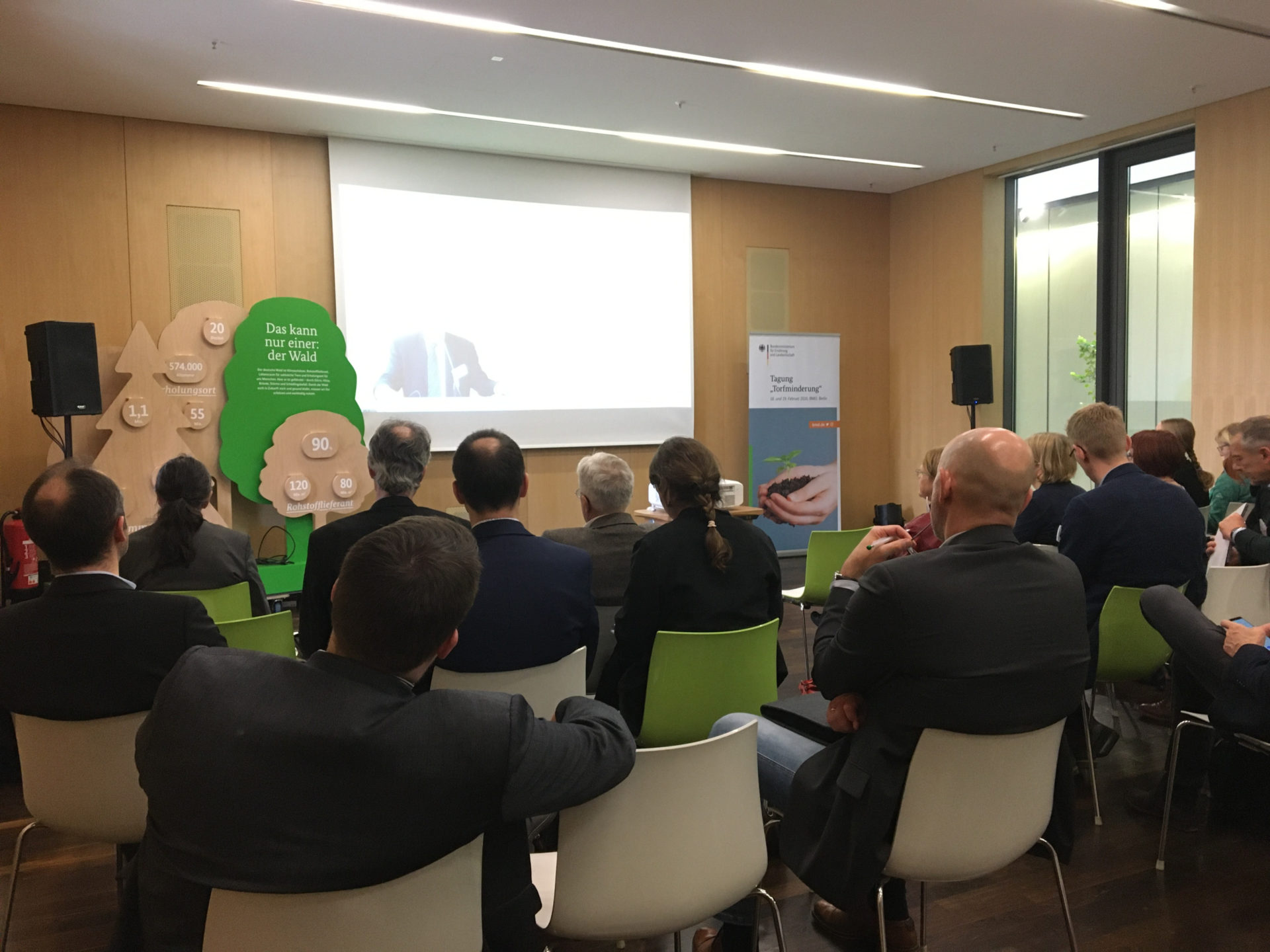On February 18 and 19, NABU’s LIFE Peat Restore team attended a Peat Reduction Conference, organised by Germany’s Food and Agriculture Ministry (BMEL). The conference focused on the Government’s Strategy to address peat extraction and growing media industry, as well as, showcased several scientific research results conducted across Germany and Europe on peat and alternatives to peat. There were also presentations sharing the experience of other EU countries that have established since longer a peat phase out strategy. The event programme and research abstracts are available in German only.
Overall, the main conclusions of the conference were very positive: peat alternatives can replace perfectly peat; this is especially true of potting soils for private gardeners. Users must only adjust treatment to the different substrate (e.g. some alternative substrate requires more frequent watering).
There are promising peat alternatives that perform demonstrably well. In fact, the main obstacles identified, which impede a greater use of alternatives by growing media producers, are sufficient availability of the alternative substrate, at a guaranteed quality standard. Basically, this means that it is possible to replace peat completely and that to overcome these obstacles all that is required is more ambitious and supportive policies. For example, by creating suitable legal conditions and incentives that promote greater production of renewable, regional and quality substrates (e.g. wood products and compost).

Peatlands are being destroyed by two major activities: Agriculture on peatlands, made possible by massive drainage systems that dry out the peatland area; thus degrading its primary feature as a wetland (emphasis on wet!). As well as, peat extraction, mainly, for the purposes of horticulture and production of potting soils for private gardeners.
The Strategy presented by BMEL at the conference addresses exclusively the peat extraction and growing media industry. As part of Germany’s Action Plan 2030, the strategy seeks a gradual reduction of peat extraction in Germany and phasing it out completely in the future. The programme created by BMEL will focus primarily on education and voluntary action. The idea is to implement restrictions in the amateur gardening and landscape gardening sectors faster than in commercial horticulture, so that peat will be almost completely eliminated from private gardening and landscaping in the next six years.
However, there is currently no binding schedule for peat reduction. Moreover, the cessation of peat extraction in Germany, which is already on a declining trend since years, does not necessarily stop import of peat from other countries. The question arises. Are advisory measures and a purely voluntary principle enough to ensure the phase out of peat use in Germany?
Germany is one of the largest producers of growing media in Europe. Currently, about 8 million cubic metres of peat are extracted annually on about 10,000 hectares and 3.7 million cubic metres of peat-based raw materials and substrates are imported. By 2032, the amount of peat available for extraction in Lower Saxony – the region in Germany most active in peat extraction – is expected to fall below one million cubic metres of peat. That may translate into more import from the Baltic countries, unless stricter measures to phase out peat use are implemented by the government.
According to the IPCC Method, the annual emissions of peat for horticultural purposes amount to approximately 7 million t CO2-eq for Europe and approximately 1 million t CO2-eq for Germany; mainly caused by the decomposition of mined peat. Peat-associated emissions correspond to half of the emissions of domestic air traffic.


